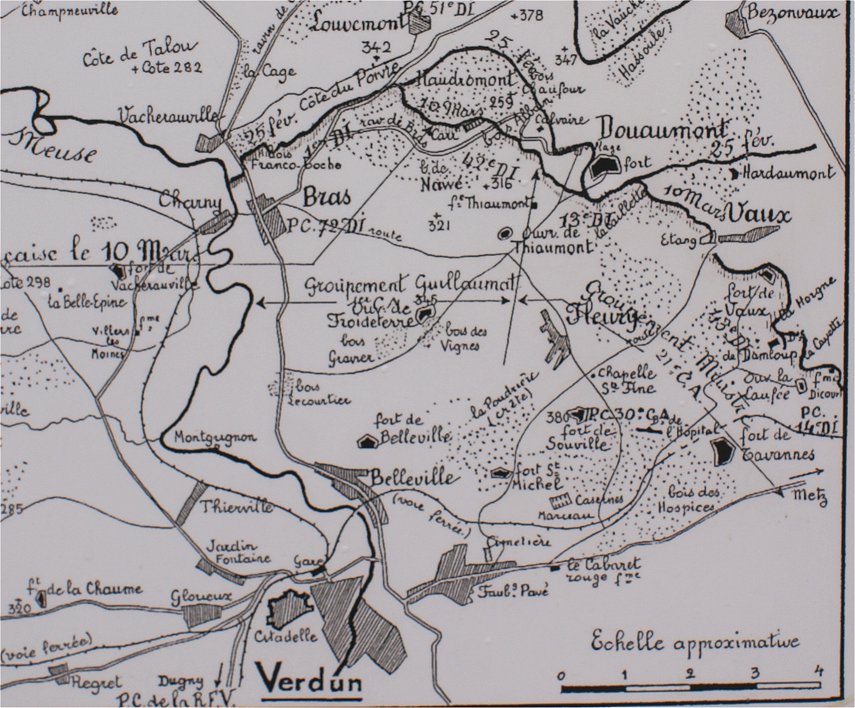
| With German capture of Fort Douaumont on February 25th then Fort Vaux on June 7th, the first of two lines of permanent fortifications had been breached. If the Germans breached the second line on the heights overlooking town, Verdun would surely fall. Fort Souville was the focus of German attacks on the second line, and its successful defense was the turning point in the battle. On July 12th, German troops reached the fort but were repulsed by artillery and an infantry counterattack. |  |
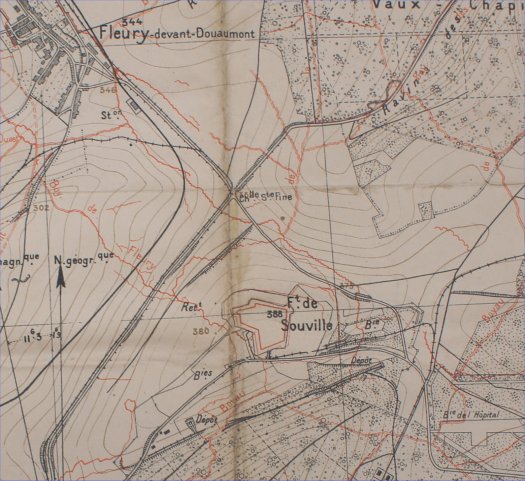
| Fort Douaumont on the first line had been modified so that its caponier was replaced by casemates on the counterscarp designed to enfilade the ditch. Fort Souville had not been modified in that way and still featured caponiers. |  |
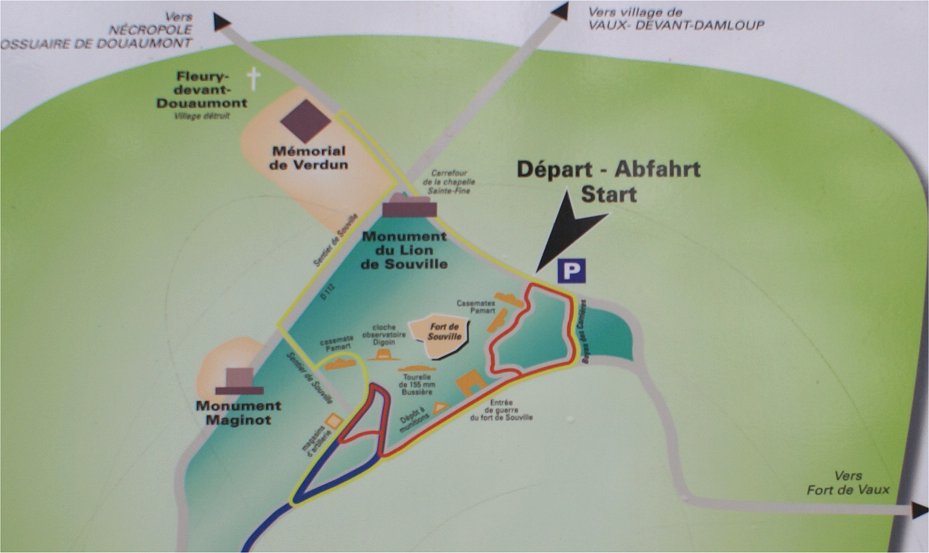
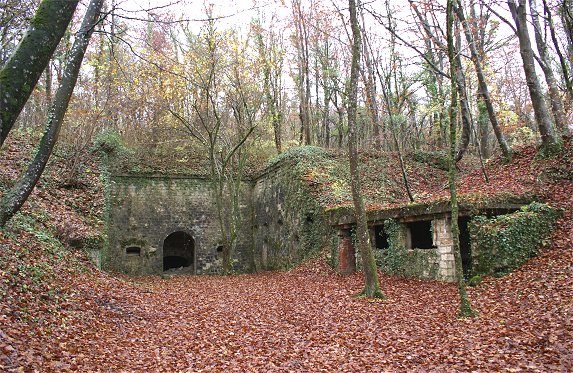
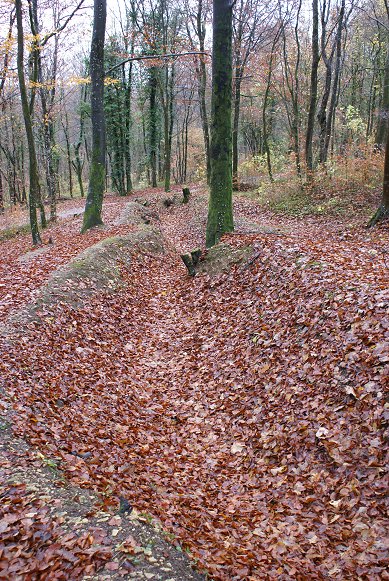

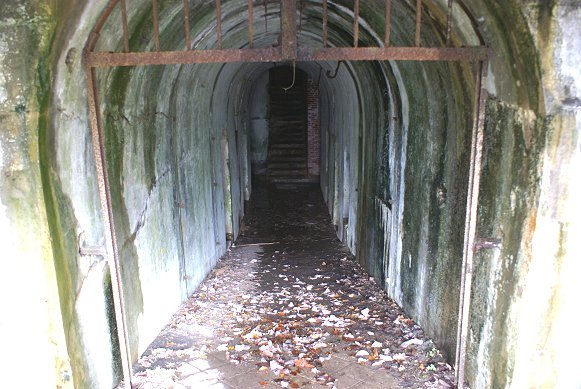
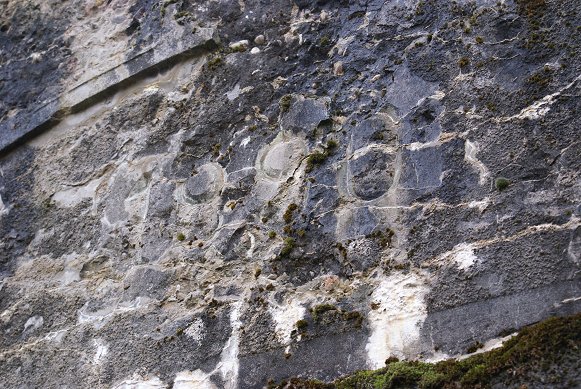

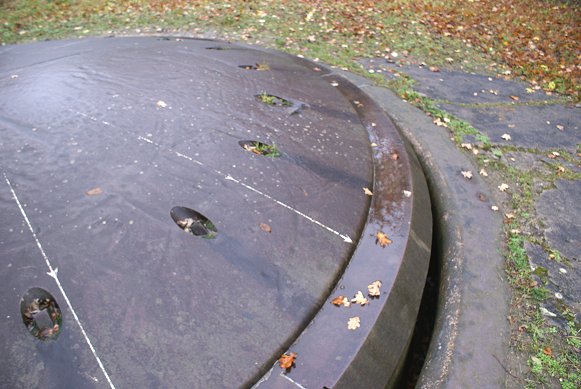

| Now we have walked a few yard to the west to see the armored observation post. In the panorama above, the 155mm turret, its entrance, and a Pamart casemate can also be seen. | 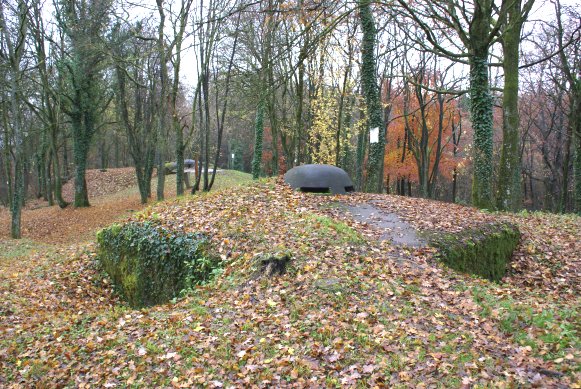 |

 |
 |
| Pamart Casemate Three of these were installed at Fort Souville beginning in 1917. Although the Pamart armored machine gun position could not be retracted or rotated like the machine gun turret, it was cheaper to produce, could not be jammed by debris like a turret could, and provided 14cm of protection. Two machine guns were used alternatively when as one became too hot to use. The field of fire was 160 degrees. |
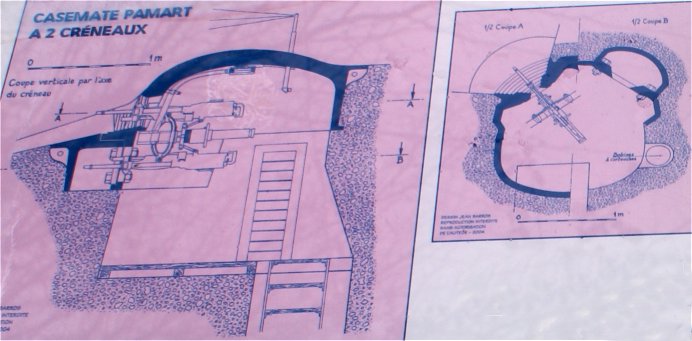 |